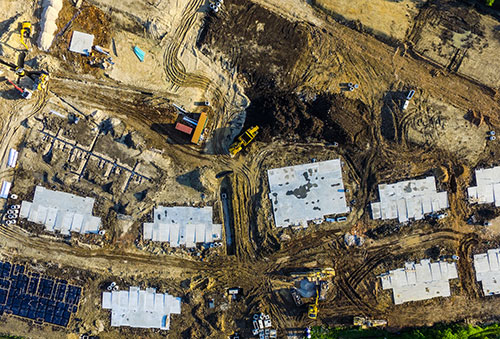There are more than 1,300 different soil types in Texas, so knowing what’s under the ground before you start building is extremely important. No two regions are alike, and building a home in Houston is going to look different than building a home in Dallas.
With that in mind, here’s a brief introduction to some of the most common soil types found in Texas, plus what builders can do to protect the foundations of the homes they build.
Most common types of soil in Texas
Texas can be divided into 21 Major Land Resource Areas. Each region has similar or related soils, vegetation, topography, climate, and land uses. For an overview of all 21 types, visit this link. For this article, we’ll focus on some of the state’s most populous areas.
Soils in Dallas County
Dallas sits in the Blackland Prairie zone, which is characterized by deep, dark-gray to black alkaline clays. The soils here are called “cracking clays” because they form deep cracks in dry weather. That means there’s a high chance of shrinking and swelling, which can severely damage foundations and other structures.
Soils in Bexar County
Bexar County is home to San Antonio, and the county sits in two zones: Blackland Prairie and the Edwards Plateau. Edwards Plateau soils are mostly shallow, stony, or gravelly, dark alkaline clays, and clay loams underlain by limestone. Less-stony soils can be found in the valleys.
Reduced soil moisture is a concern when building throughout much of Bexar County, though the exact conditions will depends on where you’re building.
Soils in Travis County
In Austin’s home county, you’ll encounter two zones once again: the Edwards Plateau and the Blackland Prairie. Building considerations based on soil type are similar to what you might find in Dallas and San Antonio, but it pays to confirm exactly what you’re building on before breaking ground.
Building in Houston County
Houston County belongs to three zones: Blackland Prairie, Post Oak/Claypan Area, and East Texas Timberland. That means its extra-critical to understand the soil before building here.
The Claypan Area has moderate surface drainage and the soils are highly erosive (particularly where they’ve been overgrazed.) On the East Texas Timberland, surface drainage is moderate to rapid, though there are many different types of soils in the area. You might find deep, light-colored acid sands, red clays, deep sands, and more.
With so many soil types to consider, it makes sense to take extra measures to protect the homes you’re building, and this can be done by acquiring a structural warranty for newly constructed homes.
Why do builders in Texas need structural warranties?
If a foundation you build encounters structural distress, an insurance-backed structural warranty can save you from having to foot the bill for repairs. 25% of all newly constructed homes will develop signs of structural defects in their lifetime, so having this extra protection is a wise move.
A structural warranty covers 1 year of workmanship defects, 2 years for systems defects, and 10 years for structural defects (specific types of structural defects that result in physical damage to load-bearing elements of a home, which in turn result in failure of the home’s load-bearing function to the extent that a home becomes unsafe, unsanitary, or otherwise unlivable.)
No two products are alike, so it pays to shop around. Here’s a Texas-specific tip to keep in mind: look for a product without soil exclusions.
Structural Warranties can protect builders and their buyers from devastating structural problems. But, maybe even more importantly, they give homeowners that all-too-important peace of mind that when something goes wrong, they’re covered. Learn more today!








